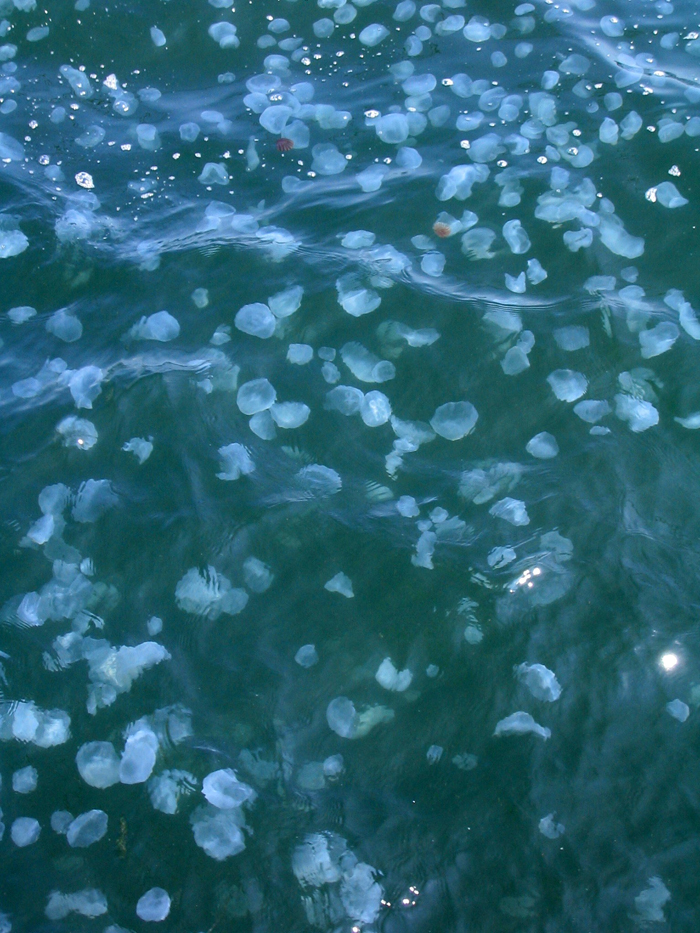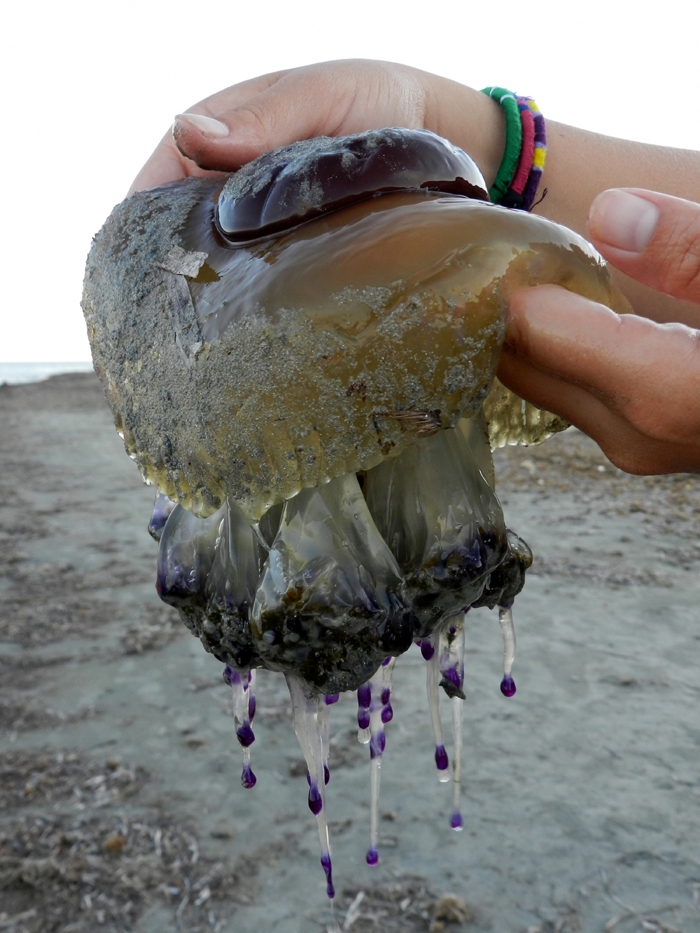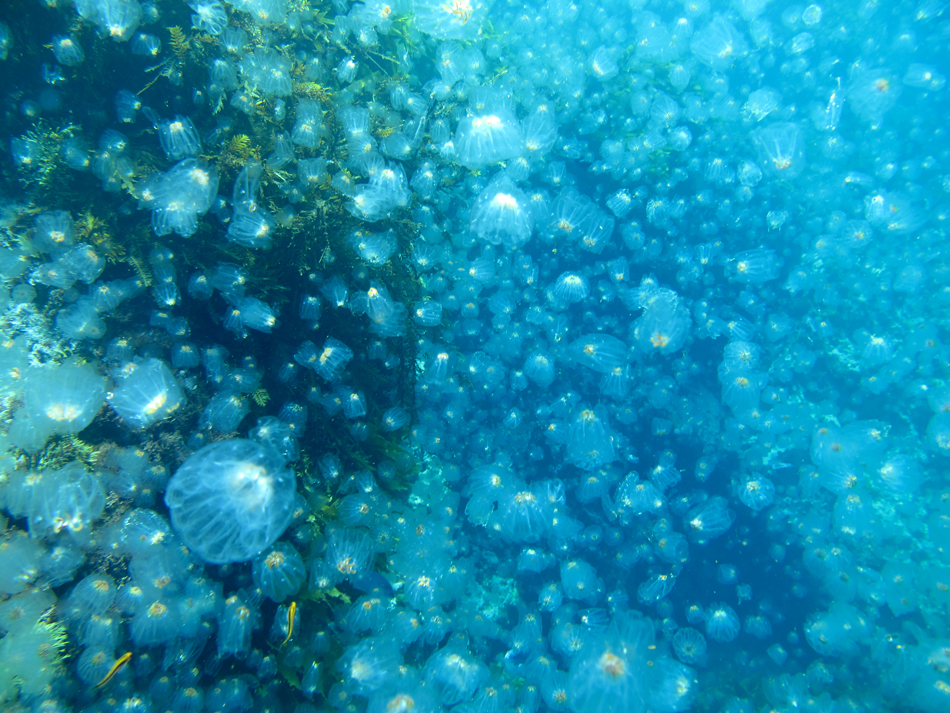Jellyfish Experts Show Increased Blooms Are a Consequence of Periodic Global Oscillations
Recent media reports have created a perception that jellyfish blooms may be increasing in the world's oceans, but a new international study suggests that there is no robust evidence for proof of a global increase in jellyfish over the past two centuries.
The study was conducted at UC Santa Barbara's National Center for Ecological Analysis & Synthesis. The results of the study, led by Rob Condon, marine scientist at the Dauphin Island Sea Lab (DISL) in Alabama, appear in the latest issue of the Proceedings of the National Academy of Science.
The study's co-authors are experts from the Global Jellyfish Group, a consortium of approximately 30 researchers of gelatinous organisms, climatology, oceanography, time-series analyses, and socioeconomics from around the globe. They include lead co-authors Carlos Duarte of the University of Western Australia's Oceans Institute and the Instituto Mediterráneo de Estudios Avanzados (IMEDEA) in Spain; Kylie Pitt of Griffith University in Australia; and Cathy Lucas of the University of Southampton in the UK.
Blooms, or proliferations, of jellyfish can show a substantial, visible impact on coastal populations –– clogged nets for fishermen, stinging waters for tourists, and choked cooling intake pipes for power plants. The key finding of this study shows that global jellyfish populations undergo concurrent oscillations with successive decadal periods of rise and fall, including a rising phase in the 1990's and early 2000's that has contributed to the current perception of a global increase in jellyfish abundance. The previous period of high jellyfish numbers during the 1970's went unnoticed due to limited research on jellyfish at the time, less awareness of global-scale problems, and a lower capacity for information sharing (e.g., no internet).
While there has been no increase over the long-term, the authors detected a hint of a slight increase in jellyfish since 1970, although this trend was countered by the observation that there was no difference in the proportion of increasing vs. decreasing jellyfish populations over time. "Sustained monitoring is now required over the next decade to shed light with statistical confidence whether the weak increasing linear trend in jellyfish populations after 1970 is an actual shift in the baseline, or part of a larger oscillation," Condon said.
To date, media and scientific opinion for the current perception of a global increase in jellyfish was evidenced by a few local and regional case studies. "Clearly, there are areas where jellyfish have increased; the situation with the Giant Jellyfish in Japan and parts of the Mediterranean are classic examples," Condon said. "But there are also areas where jellyfish numbers have remained stable, fluctuated over decadal periods, or actually decreased over time."
The group says that it is important to sample over appropriate spatial and time scales so that trends are not misinterpreted and the correct message is communicated.
Increased speculation and discrepancies about current and future jellyfish blooms by the media and in climate and science reports formed the motivation for the study. "There are major consequences for getting the answer correct for tourism, fisheries and management decisions as they relate to climate change and changing ocean environments," Duarte said. "The important aspect about our work is that we have provided the long-term baseline backed with all data available to science, which will enable scientists to build on and eventually repeat these analyses in a decade or two from now, to determine whether there has been a real increase in jellyfish."
Condon added: "The realization that jellyfish synchronously rise and fall around the world should now lead researchers to search for the long-term natural and climate drivers of jellyfish populations, in addition to begin monitoring jellyfish in open ocean and Southern Hemisphere regions that are underrepresented in our analyses."
"The more we know, the better we can manage oceanic ecosystems or respond accurately to future effects of climate change," Duarte said.
Given the potential damage posed by jellyfish blooms to fisheries, tourism and other human industries, the findings of the group foretell recurrent phases of rise and fall in jellyfish populations that society should be prepared to face.
Related Links
National Center for Ecological Analysis and Synthesis
Dauphin Island Sea Lab
Proceedings of the National Academy of Science






